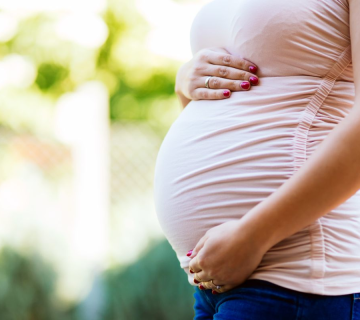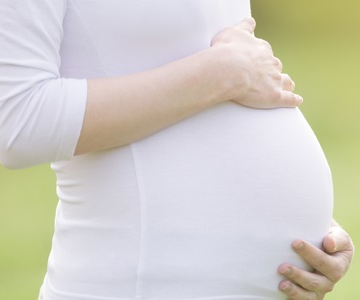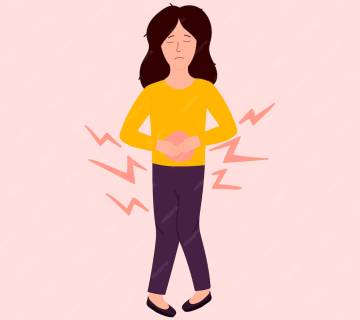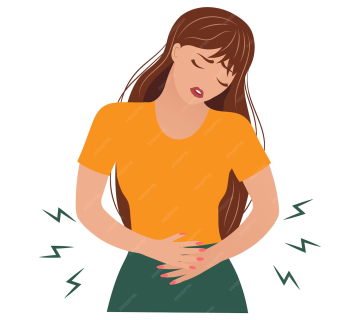
Does HPV Cause Pelvic Inflammatory Disease?
When it comes to sexual health, questions about infections like Human Papillomavirus (HPV) and Pelvic Inflammatory Disease (PID) often pop up. You might have heard someone say, “I got HPV—does that mean I’ll get PID too?” It’s a fair question! Both conditions are tied to sexual activity, and they can sound scary if you’re not sure how they’re connected. In this article, we’re diving deep to answer the big question: Does HPV cause PID? We’ll break down what these conditions are, look at the science, bust some myths, and give you practical tips to stay healthy. By the end, you’ll feel confident about what’s going on with your body and how to protect it. Let’s get started!
Understanding HPV: What You Need to Know
HPV, or Human Papillomavirus, is super common. Imagine this: if you lined up 100 people, chances are 80 of them have had HPV at some point. That’s right—about 80 million Americans are affected, with 14 million new cases every year, according to the Centers for Disease Control and Prevention (CDC). It’s the most widespread sexually transmitted infection (STI) out there.
What Exactly Is HPV?
HPV is a virus that spreads through skin-to-skin contact, usually during sex—vaginal, anal, or oral. There are over 100 types of HPV, and they don’t all act the same way. Here’s a quick breakdown:
-
- Low-Risk Types: These can cause genital warts—small, bumpy growths that show up on your private parts. Annoying, but not usually dangerous.
-
- High-Risk Types: These are the troublemakers. They can mess with your cells over time and lead to cancers like cervical, anal, or throat cancer.
Think of HPV like a sneaky guest at a party. Most of the time, it slips in, hangs out, and leaves without you noticing. Your immune system often kicks it out within a year or two. But sometimes, it sticks around and causes problems.
How Do You Get HPV?
You don’t need to have full-on sex to catch HPV. Any close genital contact can do it—even if there’s no penetration. Condoms help, but since HPV can live on skin not covered by a condom, they’re not a perfect shield.
Signs of HPV
Here’s the tricky part: most people with HPV don’t even know they have it. It’s often silent, showing no signs at all. But when symptoms do show up, they might look like this:
-
- Genital warts—tiny bumps that can appear weeks or months after exposure.
-
- Abnormal Pap test results (for girls)—a sign that high-risk HPV might be at work.
-
- Rarely, warts in the throat (from oral sex with an infected partner).
Can You Prevent HPV?
Yes, and it’s easier than you might think! Check out these steps:
-
- ✔️ Get the HPV Vaccine: It’s a game-changer. Recommended for kids starting at age 11 or 12, it protects against the worst HPV types. Teens and young adults up to 26 can get it too, and even some adults up to 45 after a doctor’s okay.
-
- ✔️ Use Condoms: They lower your risk, even if they’re not 100% effective against HPV.
-
- ✔️ Stick to Fewer Partners: The fewer people you’re with, the less chance you’ll run into HPV.
What Is Pelvic Inflammatory Disease (PID)?
Now, let’s switch gears to PID—Pelvic Inflammatory Disease. This is an infection that hits a girl’s reproductive organs, like the uterus, fallopian tubes, and ovaries. It’s serious because if it’s ignored, it can mess up your chances of having kids later.
What Causes PID?
PID usually starts when bacteria sneak up from the vagina or cervix into the upper reproductive parts. The main culprits? Two STIs:
-
- Chlamydia: A super common bacterial infection that often has no symptoms.
-
- Gonorrhea: Another bacterial STI that can fly under the radar.
Sometimes, other bacteria—like ones normally chilling in your vagina—can cause PID too. This might happen after things like childbirth, an abortion, or getting an IUD put in.
Symptoms to Watch For
PID doesn’t always shout that it’s there. Some girls feel nothing, which is why it’s sneaky. But when it does show up, you might notice:
-
- Pain in your lower belly or pelvis—like a dull ache or sharp stabs.
-
- Weird vaginal discharge—yellow, green, or smelly.
-
- Fever or chills.
-
- Pain during sex or when you pee.
-
- Spotty periods or bleeding between them.
If any of this sounds familiar, don’t wait—see a doctor fast.
Why PID Is a Big Deal
Untreated PID can leave lasting damage. Here’s what could happen:
-
- Infertility: Scarring in your fallopian tubes can block eggs from getting through—meaning no pregnancy.
-
- Ectopic Pregnancy: When a fertilized egg gets stuck outside the uterus (usually in a tube). It’s dangerous and needs emergency care.
-
- Chronic Pain: Pelvic pain that just won’t quit, even years later.
How to Stop PID Before It Starts
Since PID often ties back to STIs, prevention is all about smart choices:
-
- ✔️ Use Condoms Every Time: They cut your risk of chlamydia and gonorrhea.
-
- ✔️ Get Tested: Regular STI checks can catch problems early.
-
- ✔️ Act Fast: If you test positive for an STI, treatment stops it from becoming PID.
Does HPV Cause PID? Let’s Look at the Facts
Okay, here’s the million-dollar question: Does HPV cause PID? At first glance, it might seem like they’re buddies since both are linked to sex. But let’s dig into the science and see what’s really going on.
What Research Tells Us
Most experts—like those at the CDC and Johns Hopkins Medicine—agree that PID comes from bacteria, not viruses. Chlamydia and gonorrhea are the big players, while HPV is a virus with a different MO. HPV likes to mess with cells and cause things like warts or cancer, not the widespread inflammation of PID.
But wait—some studies hint at a possible connection:
-
- A PubMed study found that women with PID were more likely to have HPV than those without. They wondered if PID might make cervical cancer (an HPV-related issue) more likely. It’s a clue, but not proof HPV causes PID.
-
- A PMC study from China checked HPV rates in women with reproductive infections, including PID. They noticed higher HPV in women with bacterial vaginosis or yeast infections, but didn’t pin PID directly on HPV.
So, there’s overlap, but no smoking gun. HPV doesn’t seem to directly spark the bacterial infection that defines PID.
What Experts Say
Let’s hear from the pros:
Orion Nightingale, MD, Infectious Disease Specialist:
“HPV is a virus, not a bacterium, so it’s not a classic PID cause. But could it play a supporting role? Maybe. If someone has HPV and chlamydia together, the irritation might make PID more likely. We need more studies to be sure.”
Ophelia, RN, Women’s Health Nurse:
“I see a lot of PID cases tied to chlamydia or gonorrhea. HPV shows up sometimes too, especially in girls with multiple STIs. It’s more about the combo than HPV alone.”
Caspian Sterling, PhD, Epidemiologist:
“The numbers don’t scream ‘HPV causes PID.’ They’re both tied to sexual behavior, so they can happen together. That might trick people into thinking there’s a direct link.”
Why the Mix-Up?
Here’s why HPV and PID get tangled up in people’s minds:
-
- Same Risk Zone: Both come from sexual activity, especially with multiple partners or no protection.
-
- Pelvic Trouble: HPV can cause discomfort (like warts), and PID brings pelvic pain—easy to confuse!
-
- Double Trouble: You can have HPV and a PID-causing STI at once, muddying the waters.
Bottom Line: HPV doesn’t directly cause PID. It’s more like a neighbor than a partner in crime.
HPV vs. PID: A Side-by-Side Look
Still not sure how they differ? Let’s break it down in a table:
| Feature | HPV | PID |
|---|---|---|
| Type | Virus | Bacterial Infection |
| Main Cause | HPV strains (over 100 types) | Chlamydia, Gonorrhea |
| How It Spreads | Skin-to-skin contact | Bacteria moving up from vagina |
| Key Symptoms | Warts, abnormal Pap results | Pelvic pain, discharge, fever |
| Big Risks | Cervical cancer, genitalwarts | Infertility, ectopic pregnancy |
| Prevention | Vaccine, condoms | Condoms, STI testing |
| Treatment | No cure; treat symptoms | Antibiotics |
See the difference? HPV is a viral troublemaker; PID is a bacterial invader.
Protecting Yourself: Tips for HPV and PID
Whether HPV causes PID or not, you don’t want either one. Here’s how to keep both at bay:
Step 1: Get the HPV Vaccine
-
- Who: Kids 11-12, teens, young adults up to 26, some adults up to 45 (ask your doc).
-
- Why: Stops the HPV types behind 90% of cervical cancers andwarts.
-
- How: Usually 2-3 shots over 6 months. Easy peasy!
Step 2: Play It Safe
-
- ✔️ Condoms: Use them every time. They’re your best bet against STIs.
-
- ✔️ Fewer Partners: Less exposure = less risk.
-
- ❌ Douching: Skip it—it messes up your vagina’s natural defenses.
Step 3: Stay on Top of Your Health
-
- Girls: Pap tests every 3 years starting at 21. Add HPV testing at 30.
-
- Everyone: STI tests yearly—or sooner if you have symptoms or a new partner.
-
- Act Fast: Weird discharge or pain? Doctor time!
Step 4: Know Your Body
Spot these red flags early:
-
- HPV: Warts or funky Pap results.
-
- PID: Belly pain, smelly discharge, fever.
What Happens If You Get HPV or PID?
Caught one of these? Don’t panic—here’s what to expect.
HPV: Diagnosis and Treatment
-
- Diagnosis:
-
- Girls: Pap test or HPV test if cells look off.
-
- Guys: No routine test—warts get spotted by eye.
-
- Diagnosis:
-
- Treatment:
-
- No cure for the virus, but:
-
- Warts: Creams, freezing, or snipping them off.
-
- Precancerous cells: Removed before they turn cancerous.
-
- No cure for the virus, but:
-
- Treatment:
PID: Diagnosis and Treatment
-
- Diagnosis:
-
- Pelvic exam to feel for soreness.
-
- Swabs for chlamydia/gonorrhea.
-
- Maybe an ultrasound to peek inside.
-
- Diagnosis:
-
- Treatment:
-
- Antibiotics—pills or shots.
-
- Finish every dose, even if you feel fine.
-
- No sex till it’s gone (about 2 weeks).
-
- Severe cases? Hospital stay with IV meds.
-
- Treatment:
Pro Tip: Tell your partner(s) if you’ve got an STI. They need to get checked too!
Busting Myths About HPV and PID
There’s a lot of noise out there. Let’s clear it up:
-
- Myth: HPV only affects girls.
Fact: Nope—guys get it too and can pass it on or get cancers from it.
- Myth: HPV only affects girls.
-
- Myth: PID means you’re done having kids.
Fact: Not always. Early treatment can save your fertility.
- Myth: PID means you’re done having kids.
-
- Myth: HPV vaccine is just for kids.
Fact: Adults can get it too—talk to your doctor.
- Myth: HPV vaccine is just for kids.
-
- Myth: Condoms stop everything.
Fact: They help a ton but aren’t perfect for HPV.
- Myth: Condoms stop everything.
-
- Myth: HPV and PID are the same.
Fact: Totally different beasts—one’s a virus, one’s bacterial.
- Myth: HPV and PID are the same.
The Latest Scoop: What’s New in Research?
Science doesn’t stand still. Here’s what’s fresh:
-
- A 2023 study from the National STD Curriculum at UW found that untreated chlamydia is still the top PID trigger—not HPV. But they noted co-infections (like HPV + chlamydia) might worsen outcomes.
-
- The WHO (2024) says HPV vaccination has cut cervical cancer rates by 40% in vaccinated groups. No PID link, but it’s saving lives!
-
- A Chinese study (2023) saw HPV in 30% of women with PID—but couldn’t prove it caused it. More of a “they hang out together” vibe.
The takeaway? HPV and PID might cross paths, but the evidence keeps pointing to bacteria as PID’s real boss.
Your Action Plan: Stay Healthy in 5 Steps
Ready to take charge? Follow this guide:
-
- Vaccinate: Book that HPV shot—today’s protection, tomorrow’s peace.
-
- Gear Up: Stock condoms and use them. Every. Single. Time.
-
- Test: Schedule an STI check. Put it on your calendar like a dentist visit.
-
- Listen: Feel off? Pain, discharge, warts? Call your doc pronto.
-
- Learn: Share this info with friends—spread knowledge, not infections!
Real Talk: Stories That Hit Home
Let’s make this real. Imagine Mia, 19. She hooked up at a party, no condom. A month later, she’s got pelvic pain and a fever. Turns out, it’s PID from chlamydia—not HPV. Treated fast, she’s fine now. Then there’s Jake, 22. He noticed warts “down there” after a fling. HPV, not PID. A quick freeze at the clinic, and he’s good. Different bugs, different fixes—but both dodged bigger trouble by acting quick.
Let’s Chat: Test Your Smarts!
Think you’ve got this? Try this mini-quiz:
-
- What’s the top cause of PID?
-
- A) HPV
-
- B) Chlamydia
-
- C) Yeast
-
- What’s the top cause of PID?
-
- Can HPV cause cancer?
-
- A) Yes
-
- B) No
-
- Can HPV cause cancer?
-
- How do you prevent PID best?
-
- A) Vaccine
-
- B) Condoms
-
- C) Douching
-
- How do you prevent PID best?
-
- True/False: HPV has a cure.
Answers:
-
- B
-
- A
-
- B
-
- False
How’d you do? Drop your score in the comments—or ask me anything!
Wrapping It Up
So, does HPV cause pelvic inflammatory disease? Nope, not directly. PID comes from bacteria like chlamydia and gonorrhea, while HPV is a virus cooking up its own trouble—like warts and cancer. They might show up together because of shared risks (hello, unprotected sex!), but one doesn’t flip the switch for the other. The good news? You’ve got the power to dodge both with vaccines, condoms, and quick check-ups. Stay smart, stay safe, and if something feels off, don’t wait—talk to a doctor. Your health’s worth it!
Sources:
-
- CDC
-
- Johns Hopkins Medicine
-
- PubMed
- WHO




No comment